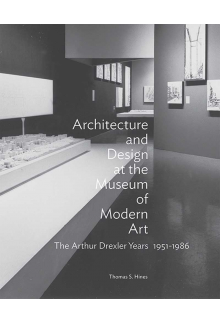- Titulinis
- Meno ir laisvalaikio literatūra
- Architektūra, dizainas
- Architecture and Design at the Museum of Modern Art
Architecture and Design at the Museum of Modern Art
Balsavo 0
ISBN: 9781606065815
Leidimo metai: 2019
Puslapių skaičius: 208
Formatas: Kieti viršeliai
Formatas: 25.4×20.3
Leidimo metai: 2019
Puslapių skaičius: 208
Formatas: Kieti viršeliai
Formatas: 25.4×20.3
Kaina:
Šių parametrų produkto neturime
Likutis pakankamas
Iš leidyklos gausime per 3-5 savaitės. Galimas vėlavimas
Turime sandėlyje. Pristatymas Lietuvoje 1-4 d.d.
Iš leidyklos gausime per 3-5 savaitės. Galimas vėlavimas
Pristatymo sąlygos
Aprašymas
Arthur Drexler (1921-1987) served as the curator and director of the Architecture and Design Department at the Museum of Modern Art (MOMA) from 1951 until 1986-the longest curatorship in the museum's history. Over four decades he conceived and oversaw trailblazing exhibitions that not only reflected but also anticipated major stylistic developments. Although several books cover the roles of MoMA's founding director, Alfred Barr, and the department's first curator, Philip Johnson, this is the only in-depth study of Drexler, who gave the department its overall shape and direction. During Drexler's tenure, MoMA played a pivotal role in examining the work and confirming the reputations of twentieth-century architects, among them Frank Lloyd Wright, Le Corbusier, Richard Neutra, Marcel Breuer, and Ludwig Mies van der Rohe. Exploring unexpected subjects-from the design of automobiles and industrial objects to a reconstruction of a Japanese house and garden-Drexler's boundary-pushing shows promoted new ideas about architecture and design as modern arts in contemporary society. The department's public and educational programs projected a culture of popular accessibility, offsetting MoMA's reputation as an elitist institution. Drawing on rigorous archival research as well as author Thomas S. Hines's firsthand experience working with Drexler, Architecture and Design at the Museum of Modern Art analyses how MoMA became a touchstone for the practice and study of midcentury architecture.
Atsiliepimai (0)
Palikite atsiliepimą

